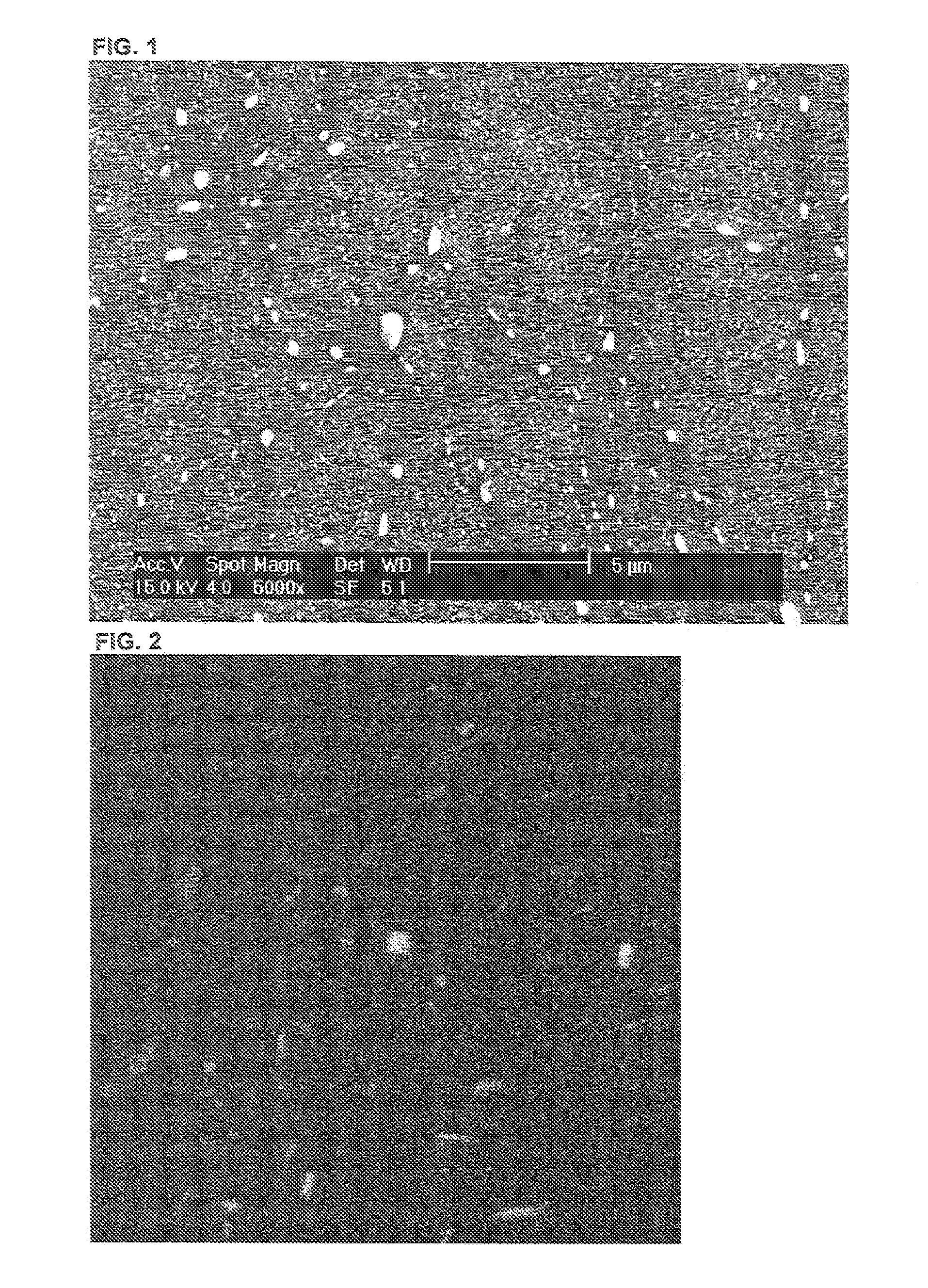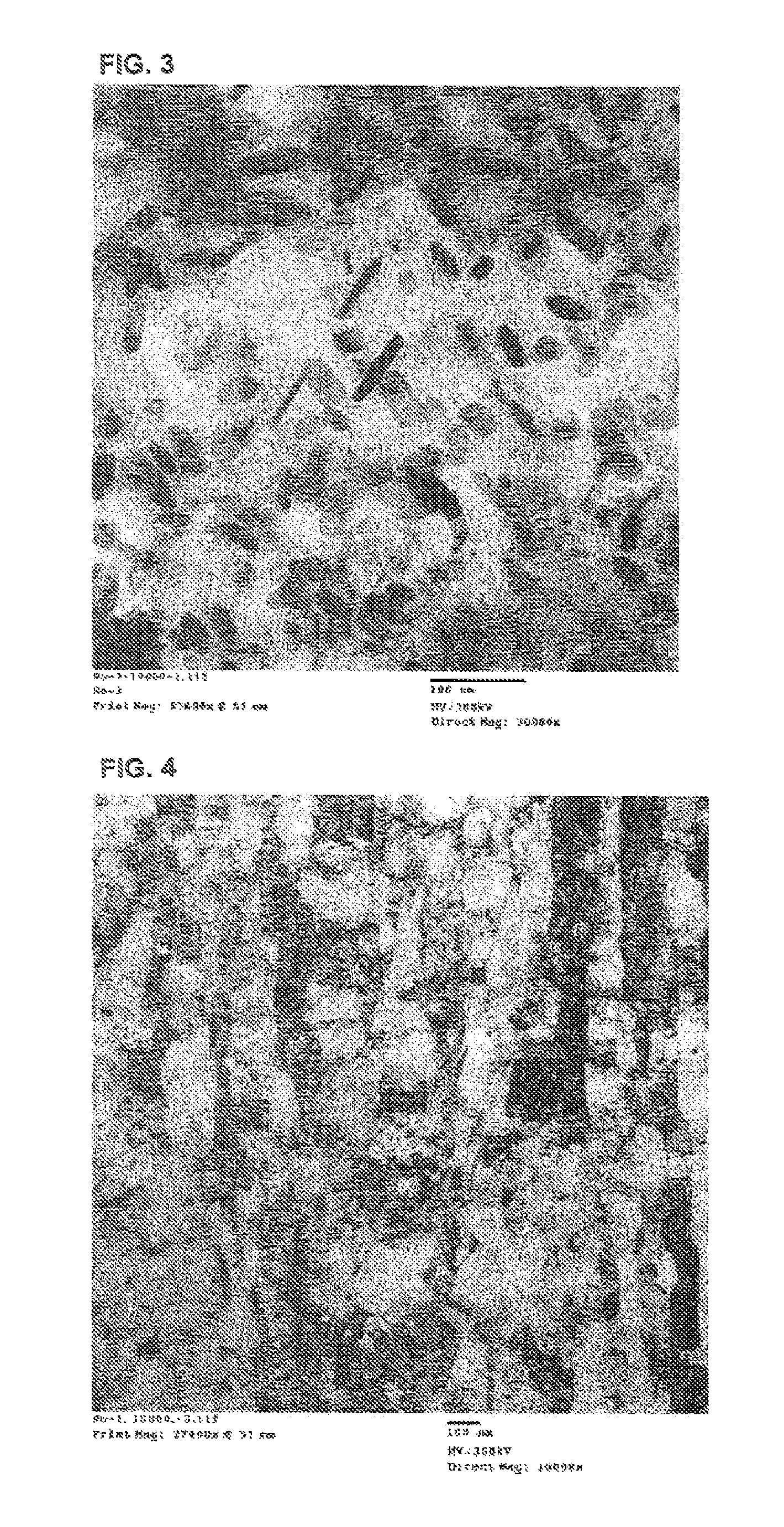Cu—Ni—Si alloy for electronic material
a technology of electronic materials and alloys, applied in the field of precipitation hardened copper alloys, can solve the problems of difficult control of particle size and density, insufficient favorable influence on strength, and difficulty in precipitating small particles, and achieve the effect of increasing the characteristics of corson alloys
- Summary
- Abstract
- Description
- Claims
- Application Information
AI Technical Summary
Benefits of technology
Problems solved by technology
Method used
Image
Examples
example
[0081]Hereinafter, specific examples of the invention will be described, but these examples are provided to help better understanding of the invention and its advantages, and are not intended to limit the invention by any means.
[0082]Copper alloys with various component compositions indicated in Tables 1 to 4 were melted in a high frequency melting furnace, were maintained at each melting holding temperature, and were cast into an ingot having a thickness of 30 mm. Thereafter, this ingot was heated at each reheating treatment temperature, then was hot rolled at 850 to 1050° C. for 0.5 to 5 hours (the material temperature at the time of completion of hot rolling was 500° C.) to obtain a plate thickness of 10 mm, and then surface grinding was applied by a thickness of 8 mm in order to remove scale at the surface. Subsequently, after the plate thickness becomes 0.15 mm or 0.10 mm by the cold rolling, solution treatment was earned out under the conditions indicated in Tables 1 to 4. Sub...
PUM
| Property | Measurement | Unit |
|---|---|---|
| particle size | aaaaa | aaaaa |
| particle size | aaaaa | aaaaa |
| particle size | aaaaa | aaaaa |
Abstract
Description
Claims
Application Information
 Login to View More
Login to View More - R&D
- Intellectual Property
- Life Sciences
- Materials
- Tech Scout
- Unparalleled Data Quality
- Higher Quality Content
- 60% Fewer Hallucinations
Browse by: Latest US Patents, China's latest patents, Technical Efficacy Thesaurus, Application Domain, Technology Topic, Popular Technical Reports.
© 2025 PatSnap. All rights reserved.Legal|Privacy policy|Modern Slavery Act Transparency Statement|Sitemap|About US| Contact US: help@patsnap.com


